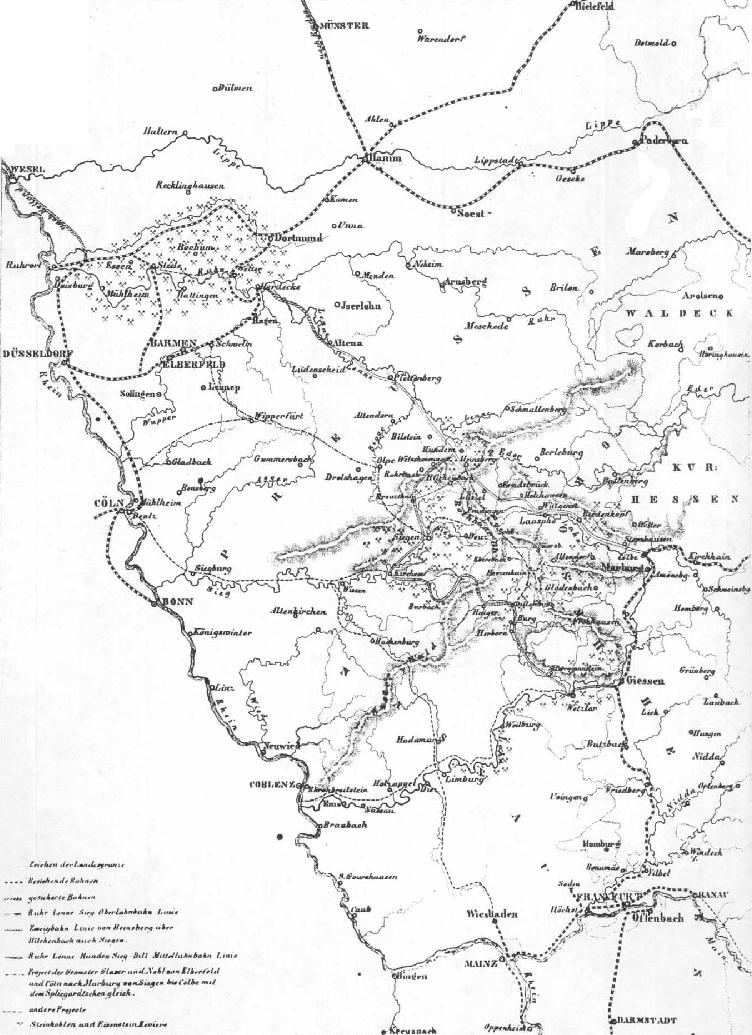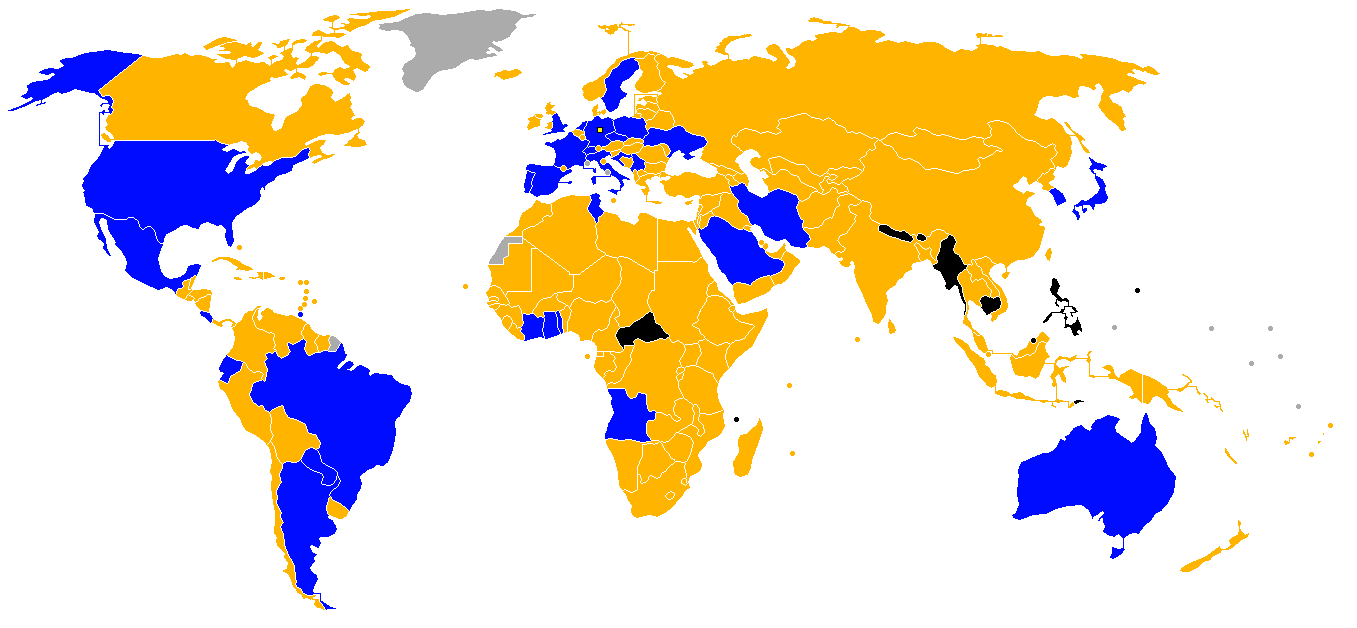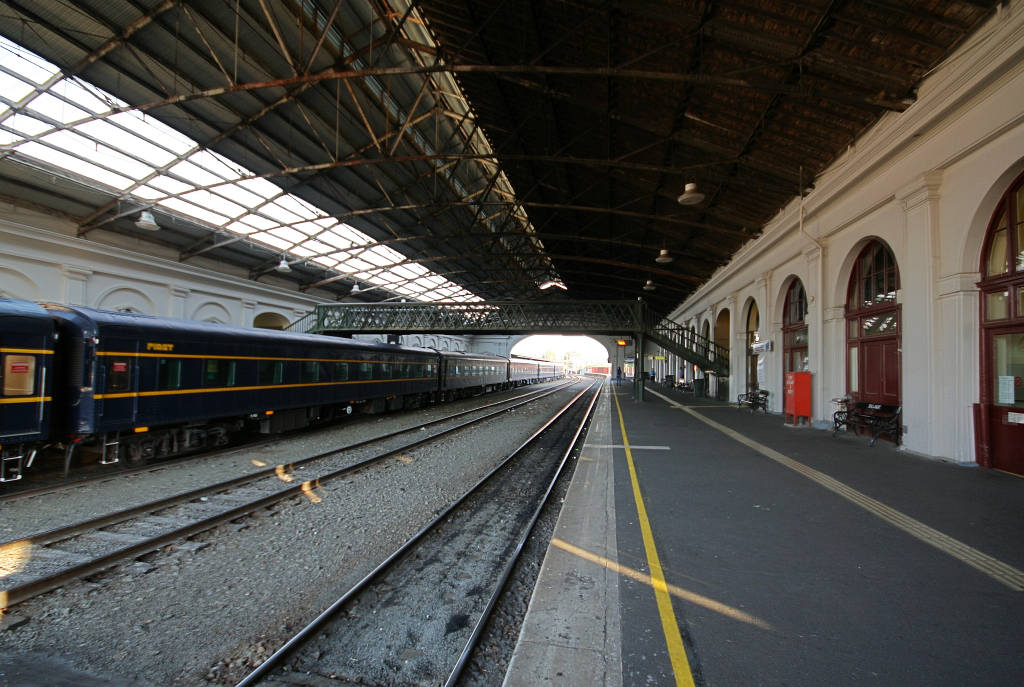|
Hagen Hbf
Hagen Hauptbahnhof is a railway station serving the city of Hagen in western Germany. It is an important rail hub for the southeastern Ruhr area, offering regional and long distance connections. The station was opened in 1848 as part of the Bergisch-Märkische Railway Company's Elberfeld–Dortmund line and is one of the few stations in the Ruhr valley to retain its original station hall, which dates back to 1910. History The original Elberfeld–Dortmund trunk line of the Bergisch-Märkische Railway Company was completed in 1848/49 linking Hagen to the rapidly expanding Prussian railway network. This led to Hagen quickly becoming an industrial city based steel and metal production. After the opening of the Ruhr–Sieg railway to Siegen via Altena in 1861 the city also became an important railway junction. The Baroque Revival entrance building, opened on 14 September 1910, was built of brick and partly covered with sandstone. It survived bombing during the Second World War, ... [...More Info...] [...Related Items...] OR: [Wikipedia] [Google] [Baidu] |
Hagen
Hagen () is the 41st-largest city in Germany. The municipality is located in the state of North Rhine-Westphalia. It is located on the south eastern edge of the Ruhr area, 15 km south of Dortmund, where the rivers Lenne and Volme (met by the river Ennepe) meet the river Ruhr. As of 31 December 2010, the population was 188,529. The city is home to the FernUniversität Hagen, which is the only state-funded distance education university in Germany. Counting more than 67,000 students (March 2010), it is the largest university in Germany. History Hagen was first mentioned around the year 1200, and is presumed to have been the name of a farm at the confluence of the Volme and the Ennepe rivers. After the conquest of in 1324, Hagen passed to the County of Mark. In 1614 it was awarded to the Margraviate of Brandenburg, according to the Treaty of Xanten. In 1701 it became part of the Kingdom of Prussia. After the defeat of Prussia in the Fourth Coalition, Hagen was incorporated ... [...More Info...] [...Related Items...] OR: [Wikipedia] [Google] [Baidu] |
Ruhr–Sieg Railway
The Ruhr–Sieg railway is a 106 km long double-track, electrified main line from Hagen to Siegen via Iserlohn-Letmathe, Finnentrop and Kreuztal in the German state of North Rhine-Westphalia. The line, which has many tunnels, runs primarily through the valley of the Lenne. South of Altenhundem it crosses the watershed between the Lenne and the Sieg. The line was opened between 1859 and 1861 and is one of the oldest railways in Germany. History In 1835 a committee was established in Siegen to promote the construction of a horse-drawn railway from Siegen to the Ruhr. The goal was better and faster transport of coal from the Ruhr for smelting in the Siegen area. Iron production in the Siegen country was very important for Prussia. It produced over 23 percent of the country’s total pig iron production and 85 percent of its crude steel production. During the lengthy approval process, the committee, which was based in Hagen from 1851, changed the proposal to a steam rail ... [...More Info...] [...Related Items...] OR: [Wikipedia] [Google] [Baidu] |
Cologne
Cologne ( ; german: Köln ; ksh, Kölle ) is the largest city of the German western state of North Rhine-Westphalia (NRW) and the fourth-most populous city of Germany with 1.1 million inhabitants in the city proper and 3.6 million people in the urban region. Centered on the left (west) bank of the Rhine, Cologne is about southeast of NRW's state capital Düsseldorf and northwest of Bonn, the former capital of West Germany. The city's medieval Catholic Cologne Cathedral (), the third-tallest church and tallest cathedral in the world, constructed to house the Shrine of the Three Kings, is a globally recognized landmark and one of the most visited sights and pilgrimage destinations in Europe. The cityscape is further shaped by the Twelve Romanesque churches of Cologne, and Cologne is famous for Eau de Cologne, that has been produced in the city since 1709, and "cologne" has since come to be a generic term. Cologne was founded and established in Germanic ... [...More Info...] [...Related Items...] OR: [Wikipedia] [Google] [Baidu] |
InterCityExpress
The Intercity Express (commonly known as ICE ()) is a system of high-speed trains predominantly running in Germany. It also serves some destinations in Austria, Denmark (ceased in 2017 but planned to resume in 2022), France, Belgium, Switzerland and the Netherlands, mostly as part of cross border services. It is the highest service category of rail and the flagship train of the German state railway, Deutsche Bahn. There are currently 315 trainsets in use. ICE trains are the highest category (Class A) trains in the fare system of the Deutsche Bahn. Their fares are not calculated on a fixed per-kilometre table as with other trains, but instead have fixed prices for station-to-station connections, levied on the grounds that the ICE trains have a higher level of comfort. Travelling at speeds up to , they are tailored for business travellers or long-distance commuters and are marketed by Deutsche Bahn as an alternative to flights. Apart from domestic use, the trains can also be see ... [...More Info...] [...Related Items...] OR: [Wikipedia] [Google] [Baidu] |
2006 FIFA World Cup
The 2006 FIFA World Cup, also branded as Germany 2006, was the 18th FIFA World Cup, the quadrennial international football world championship tournament. It was held from 9 June to 9 July 2006 in Germany, which had won the right to host the event in July 2000. Teams representing 198 national football associations from all six populated continents participated in the qualification process which began in September 2003. Thirty-one teams qualified from this process along with hosts Germany for the finals tournament. It was the second time that Germany staged the competition and the first as a unified country along with the former East Germany with Leipzig as a host city (the other was in 1974 in West Germany), and the 10th time that the tournament was held in Europe. Italy won the tournament, claiming their fourth World Cup title, defeating France 5–3 in a penalty shoot-out in the final after extra time had finished in a 1–1 draw. Germany defeated Portugal 3–1 ... [...More Info...] [...Related Items...] OR: [Wikipedia] [Google] [Baidu] |
World War II
World War II or the Second World War, often abbreviated as WWII or WW2, was a world war that lasted from 1939 to 1945. It involved the World War II by country, vast majority of the world's countries—including all of the great powers—forming two opposing military alliances: the Allies of World War II, Allies and the Axis powers. World War II was a total war that directly involved more than 100 million Military personnel, personnel from more than 30 countries. The major participants in the war threw their entire economic, industrial, and scientific capabilities behind the war effort, blurring the distinction between civilian and military resources. Air warfare of World War II, Aircraft played a major role in the conflict, enabling the strategic bombing of population centres and deploying the Atomic bombings of Hiroshima and Nagasaki, only two nuclear weapons ever used in war. World War II was by far the List of wars by death toll, deadliest conflict in hu ... [...More Info...] [...Related Items...] OR: [Wikipedia] [Google] [Baidu] |
Ruhr
The Ruhr ( ; german: Ruhrgebiet , also ''Ruhrpott'' ), also referred to as the Ruhr area, sometimes Ruhr district, Ruhr region, or Ruhr valley, is a polycentric urban area in North Rhine-Westphalia, Germany. With a population density of 2,800/km2 and a population of over 5 million (2017), it is the largest urban area in Germany. It consists of several large cities bordered by the rivers Ruhr to the south, Rhine to the west, and Lippe to the north. In the southwest it borders the Bergisches Land. It is considered part of the larger Rhine-Ruhr metropolitan region of more than 10 million people, which is the third largest in Europe, behind only London and Paris. The Ruhr cities are, from west to east: Duisburg, Oberhausen, Bottrop, Mülheim an der Ruhr, Essen, Gelsenkirchen, Bochum, Herne, Hagen, Dortmund, Lünen, Bergkamen, Hamm and the districts of Wesel, Recklinghausen, Unna and Ennepe-Ruhr-Kreis. The most populous cities are Dortmund (with a population of approx ... [...More Info...] [...Related Items...] OR: [Wikipedia] [Google] [Baidu] |
Westphalia
Westphalia (; german: Westfalen ; nds, Westfalen ) is a region of northwestern Germany and one of the three historic parts of the state of North Rhine-Westphalia. It has an area of and 7.9 million inhabitants. The territory of the region is almost identical with the historic Province of Westphalia, which was a part of the Kingdom of Prussia from 1815 to 1918 and the Free State of Prussia from 1918 to 1946. In 1946, Westphalia merged with North Rhine, another former part of Prussia, to form the newly created state of North Rhine-Westphalia. In 1947, the state with its two historic parts was joined by a third one: Lippe, a former principality and free state. The seventeen districts and nine independent cities of Westphalia and the single district of Lippe are members of the Westphalia-Lippe Regional Association (''Landschaftsverband Westfalen-Lippe''). Previous to the formation of Westphalia as a province of Prussia and later state part of North Rhine-Westphalia, t ... [...More Info...] [...Related Items...] OR: [Wikipedia] [Google] [Baidu] |
Train Shed
A train shed is a building adjacent to a station building where the tracks and platforms of a railway station are covered by a roof. It is also known as an overall roof. Its primary purpose is to store and protect from the elements train cars not in use, The first train shed was built in 1830 at Liverpool's Crown Street Station. The biggest train sheds were often built as an arch of glass and iron, while the smaller were built as normal pitched roofs. The train shed with the biggest single span ever built was that at the second Philadelphia Broad Street Station, built in 1891. Types of train shed Early wooden train sheds The earliest train sheds were wooden structures, often with unglazed openings to allow smoke and steam to escape. The oldest part of Bristol Temple Meads is a particularly fine – and large – example, designed by Isambard Kingdom Brunel with mock- hammerbeam roof. Surviving examples include: * Ashburton, Devon, England (station closed) * Bo'ness, F ... [...More Info...] [...Related Items...] OR: [Wikipedia] [Google] [Baidu] |
Karl Ernst Osthaus
Karl Ernst Osthaus (15 April 1874, in Hagen – 25 March 1921, in Merano) was an important German patron of avant-garde art and architecture. Life Osthaus was born to a wealthy banking family, who also owned several businesses in the textile and metalwork industries. Initially, his father wanted him to go into the family business but owing to a nervous breakdown, Karl went into academics. When he was 22, he received an inheritance from his grandparents which allowed him to pursue his interest in starting a museum. In 1902, Osthaus founded the Folkwang Museum in Hagen, Germany. After his death, the city of Hagen was unable to purchase the museum collection and in 1922 Hagen was outbid by the neighbouring city of Essen which now houses the Folkwang Collection. A separate museum survives in Hagen, the Karl Ernst Osthaus-Museum. Osthaus was a notable patron of the European avant-garde. Although in his early life he tended to German nationalism, active in the ''Alldeutscher V ... [...More Info...] [...Related Items...] OR: [Wikipedia] [Google] [Baidu] |
Johan Thorn Prikker
Johan Thorn Prikker (6 June 1868, The Hague - 5 March 1932, Cologne) was a Dutch artist who worked in Germany after 1904. His activities were very eclectic, including architecture, lithography, furniture, stained-glass windows, mosaics, tapestries and book covers as well as painting. He also worked in a variety of styles; such as Symbolism, Impressionism and Art Nouveau. Biography He was the son of a house painter. From 1881 to 1887, he was enrolled at the Royal Academy of Art,Biographical timeline @ the . but left without completing his studies. In 1890, his friend |
Stained-glass Window
Stained glass is coloured glass as a material or works created from it. Throughout its thousand-year history, the term has been applied almost exclusively to the windows of churches and other significant religious buildings. Although traditionally made in flat panels and used as windows, the creations of modern stained glass artists also include three-dimensional structures and sculpture. Modern vernacular usage has often extended the term "stained glass" to include domestic lead light and ''objets d'art'' created from foil glasswork exemplified in the famous lamps of Louis Comfort Tiffany. As a material ''stained glass'' is glass that has been coloured by adding metallic salts during its manufacture, and usually then further decorating it in various ways. The coloured glass is crafted into ''stained glass windows'' in which small pieces of glass are arranged to form patterns or pictures, held together (traditionally) by strips of lead and supported by a rigid frame. Painte ... [...More Info...] [...Related Items...] OR: [Wikipedia] [Google] [Baidu] |












